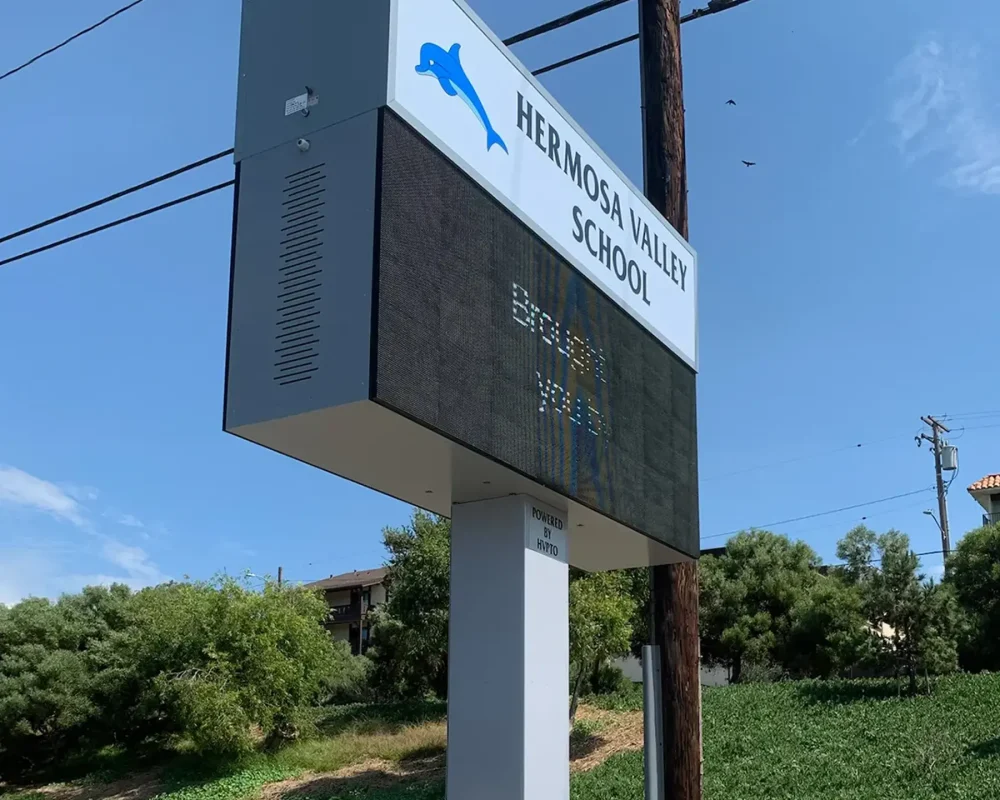The Americans with Disabilities Act (ADA) protects the rights of people with disabilities in a variety of ways, including public accommodations. Together with the Architectural and Transportation Barriers Compliance Board (ATBCB), commonly known as the Access Board, the ADA issues guidelines ensuring that public, commercial, and governmental buildings and other facilities are fully accessible to people with disabilities. This includes providing a sufficient number of accessible entrances with ADA-compliant signs.
Accessible Entrances: Minimum Number
By law, you are required to provide a certain number of accessible entrances in all newly constructed publicly accessible buildings, including apartments, hospitals, schools, hotels, office buildings, and commercial facilities. The minimum number of accessible entrances required is 60% of all public entrances. Public entrances only exclude restricted or service-only entrances. The entrances to each tenancy, all levels of parking facilities, pedestrian tunnels, and elevated walkways must also be accessible. This ensures compliance with the ADA in accommodating and not discriminating against people with disabilities.
What Makes an Entrance Accessible?
Accessible entrances have several requirements. First, 60% of external doors, internal doors, and gates must comply with the following: The width of the door or gate must be at least 32 inches, while the minimum height is 80 inches. There is also a maximum depth, which is 24 inches. The maximum opening force on accessible doors and gates is 5 lbs. of force. For active doors, the closing speed must take at least 5 seconds to go from a 90 degree opening to a 12 degree opening. The door control should be operable with one hand and have free access space in front of it to avoid the door hitting users when it swings open. With double-leaf doorways, one leaf must be fully accessible. On the bottom 10 inches of the push side of the door, there must be a smooth surface. Additionally, door and gate hardware must allow for one-hand operation.
Second, there are regulations concerning maneuvering clearances on both sides of doors and gates or on one side if it is only used in one direction. You will need to familiarize yourself with these rules, as they vary depending on the door type in question. There are also guidelines for recessed doors. Remember that maneuvering clearances for multiple doorways can overlap, but they must follow the entire height of the door and be completely unobstructed. Where there are thresholds, they can only reach a maximum height of 1/2 inch and must have a 1.2 ratio of beveling on the edges.
Third, in buildings with two-way communication systems that allow restricted access, these systems must accommodate people with hearing, speech, or visual impairments by including both visual and audible signals. If the communication system includes a handset, the cord is required to be at least 29 inches long.
ADA Signage Requirements
In addition to the above requirements, several requirements relate to the signage around entrances, exits, and accessible routes. A sign that displays the International Symbol of Accessibility (ISA) must be posted at each primary public entrance and at every major junction where the accessible travel route diverges from the regular path. The ISA features a white figure on a blue background, and the blue color must meet federal standards (Number 595B). These signs featuring the symbol must also include directional symbols and be visible to people approaching the path, entrances, and exits. Any entrances that are not accessible must have signage indicating the location of the nearest accessible entrance, with directional signage showing the way. These must also feature the ISA.
It is essential to comply with the ADA regulations for entrances and exits. Doing so shows your commitment to equality, the safety of each patron of your building, and upholding the law. Designing and manufacturing ADA-compliant signs for your specific building doesn’t have to be as complicated as it seems. Resource 4 Signs can simplify that part of the process and provide you with all your ADA-compliant signs. In addition to standard ADA signs, we can make custom ADA signs, ADA floor signs, ADA room number signs, ADA tactile and Braille signage, and much more. Look no further than Resource 4 Signs for all your ADA signage needs in the Los Angeles area!






